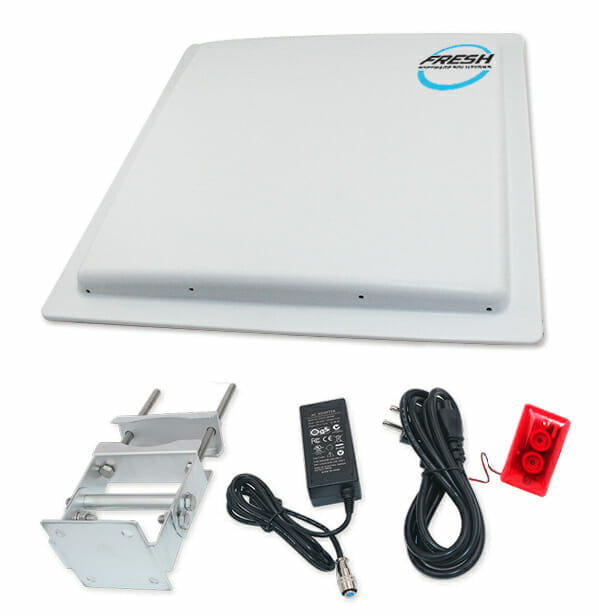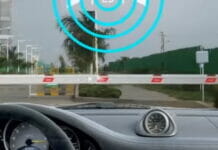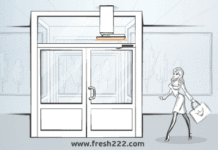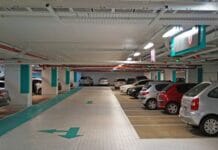A retail loss prevention system is a set of measures and technologies that retailers use to prevent and reduce losses due to theft, fraud, and other forms of inventory shrinkage. Retailers implement loss prevention systems to protect their merchandise, employees, and profits from various types of losses.
Common components of a retail loss prevention system include:
- Electronic Article Surveillance (EAS) – tagging system that involves attaching small security tags to products that trigger an alarm if they are taken out of the store without being properly deactivated or removed at the point of sale.
- Security cameras – installed in the store to monitor customer behavior and detect any suspicious activity.
- Access control systems – limit access to certain areas of the store or to sensitive information, such as inventory storage or cash registers, to authorized personnel only.
- Point-of-sale (POS) systems – monitor transactions, detect fraudulent activity, and track inventory levels in real-time.
- Inventory management systems – track inventory levels and reduce loss due to theft, damage, or expiration.
- Staff training – to recognize and respond to potential threats, such as suspicious behavior or attempts to remove security tags.
A comprehensive retail loss prevention system can help retailers minimize financial loss due to theft or fraud, reduce insurance premiums, maintain a safe shopping environment, and enhance customer trust and loyalty.
PRICE / Buy Loss Prevention System
Nowadays, the retail business is witnessing a new era in this technological age. Moreover, along with new styles of earning profits, the thefts are also not old-fashioned. Hence, to go over the intelligent frauds, you have to be smart enough. The retail loss prevention techniques will help you to succeed in this attempt. These are a set of modern methods to cut short the probable loss in your business. The anti-theft products also play a vital role in this respect. We devise some excellent models and procedures to prevent your business from suffering considerable loss. Preservation of profits is the ultimate goal for any business person. Therefore, he or she must analyze the market first to understand the current scenario.
The Loss Prevention Techniques for Retail Stores And Warehouses
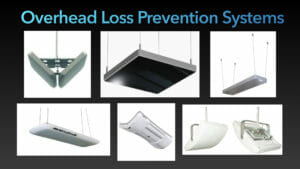
Now get to know about the kinds of the frauds in retail shops. There are different kinds of thefts that you must be aware of. These are;- Internal Theft, External Theft, Administrative Errors, Supplier Frauds. Moreover, these types are typical for the warehouses too. Therefore, the loss prevention methods applicable for the retail stores will hold good for warehouses too. Thus, if you store the excess stock in the warehouse, be very cautious about the frauds.
Internal Theft refers to shoplifting involving shrinkages in the products without much notice of the owner. Generally, the internal employees have links with these kinds of thefts. Some examples include fake return claims, fake gift cards, and many more. On the other hand, External Theft comprises more than 36% of the entire shoplifting. Stealing some items and returning them for more cash is one of the popular schemes in this regard. Another way is purchasing more merchandise by counterfeiting.
Overview Of Loss Prevention
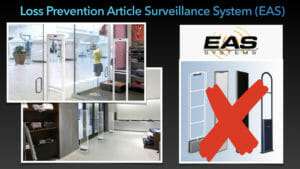
No human is perfect. Therefore, businesses will be susceptible to more administrative errors if record-keeping is mainly manual. Moreover, the book-keeper should have a sound knowledge of accounting techniques and principles. An incompetent person tends to make more errors resulting in a huge loss in the end. You should have proper control measures to stop thefts from both internal and external sides. However, you must not forget the manufacturers and the suppliers. Although it is not very common, it’s not impossible either. Therefore, your strategies to prevent loss should also focus on them and try to figure out the weak point. Analyzing the same will make you more attentive. New ideas can come across your mind to stop recurrences of such incidents. Now get to know about the products to prevent loss.
Key Benefits Of Loss Prevention
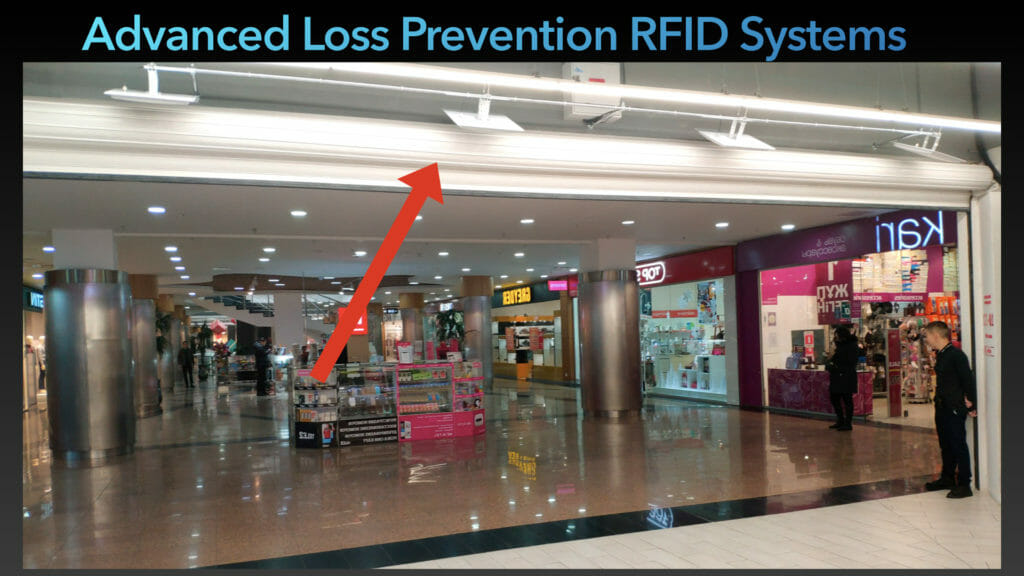
Deployment of the correct control system is highly essential to deal with various thefts in your store. The entire system depends on four main factors- cash handling, physical security, staff, and of course, the products. We have multiple products to deal with loss prevention for the retail stores. Mono anti-theft system of our company is one of the significant products for anti-theft. Moreover, the package involves installing an audible siren on unauthorized removal of any product. Several supermarkets are already approving such a technology. It is authentic and easy to use. Download the respective app from Fresh Software (Anti-Theft Software) and operate the device with full clarity. In case of any doubts, you can call our customer care number.
Moreover, our executives are ready to help you in every possible way. The 24×7 customer support service will thus make sure that you stay satisfied always. Our primary focus is safeguarding your shop from all the potential frauds. However, to prevent accounting fraud, you have to install an appropriate system to catch the mismatches. It is better to launch the software to take care of most of the financial aspects.
What Are The Advantages Of Loss Prevention System
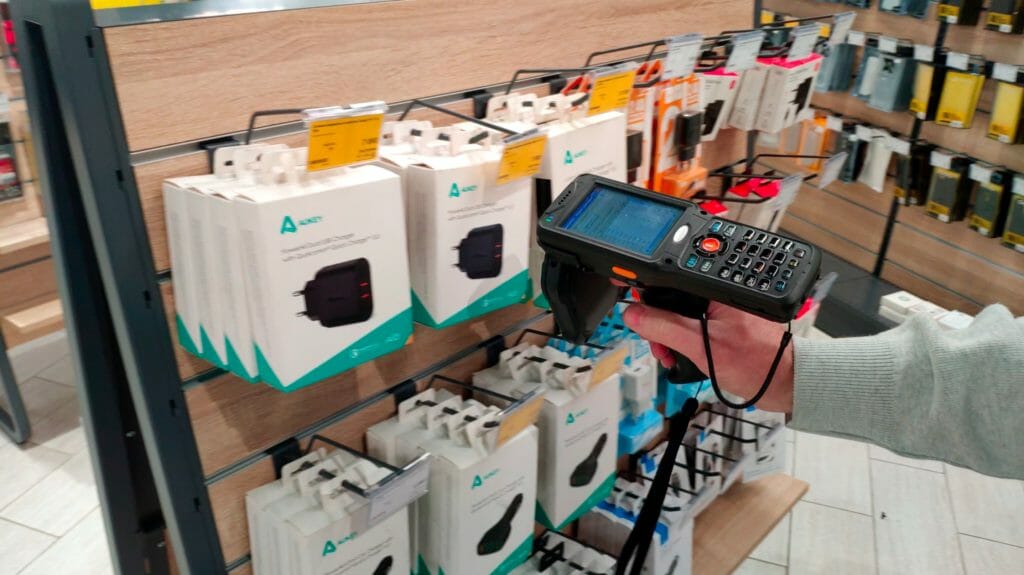
Our loss prevention systems can be used for a mobile RFID inventory or a record-keeping with a help of ERP (Enterprise Resource Planning).
The Loss prevention system as a progressive system for RFID inventory and record-keeping.
The most innovative solution in our loss prevention system is that it can be used for the future RFID inventory process. While adding optional functions and installing a software, any user can execute a fast and precise RFID inventory with the help of anti-theft system as well, or send the data into a manual mobile RFID reader at the discretion of a user.
Another device for constant watch and high security is the CCTV camera. This also acts as extraordinary evidence in the court of law. Our cameras comprise all the advanced features to capture every minor detail in the shop. Hence, no corner will be left unturned. Apart from this, the most common security measure is to keep a security guard from any third-party organization. However, in this technological era, a robot can also fulfill its purpose in a much better way indeed. So, connect with us today for an appropriate solution to prevent the probable losses. For perfect placement of any of the devices, you can contact us. Just one agreement, and we will take care of the best treatments. However, the contract is renewable after every one year. Our experts will come for a periodic check to ensure the proper functioning of the device. A mirror can also be a great support in the prevention of physical thefts.
Knock Down The Best Details About Loss Prevention
The cash section is definitely the most important and crucial segment in the whole shop. Please go for a secured POS terminal to ensure complete protection in this section. Furthermore, you should also impose certain restrictions on making phone calls. A cash register should be there, and you must opt for a period audit for higher security. Wondering how to deal with the product fraud? All your employees should have adequate product training as well as LP training.
Moreover, there must be a proper hiring process to recruit only reliable employees, especially for the showroom or the warehouse. There must also be a well-maintained stock register in the warehouse. This will record every addition, transfer, and disposal to and from the existing stock. Therefore, you must do a background check and ensure no criminal records before recruiting any personnel. The most essential tools to prevent loss of products may include the following options. Signage: It is currently a great measure to get rid of the shoplifters. In a lot of places, people put big placards with “Beware of Thefts” written. Several recent surveys say that they are highly effective and reduced theft cases to a great extent.
Return Policy: There should be a strong return policy to stop fraudulent returns. Please ensure that every receipt contains this policy in bold to make the purchaser aware of the same. Loss Prevention System: One of the biggest ways to prevent fraud is electronic article surveillance or EAS. It will alert you in case any person tries to run away with a tagged product. Apart from this, you must have a proper design of the shop to keep the products. So, start adopting any of the methods for a secured business in the long-run.
Theft Prevention System by Fresh USA, Inc.
Chicago, Retail Loss Prevention Systems
Retail Loss Prevention
Introduction
Retail loss prevention is more than just a buzzword in the industry; it’s a critical component that can make or break a business. With the retail sector constantly evolving, so do the methods of theft and fraud, making it essential for retailers to stay ahead of the curve. So, what exactly is retail loss prevention, and why is it so important? Let’s dive in and explore this essential aspect of retail management.
Understanding Retail Loss
Types of Retail Loss
Shrinkage: Shrinkage is the reduction in inventory that isn’t attributed to legitimate sales. It’s like watching your profits evaporate into thin air, often due to several factors.
Shoplifting: This is the most obvious form of theft. Shoplifters often use sophisticated methods to steal products, making it crucial for retailers to be vigilant.
Employee Theft: Unfortunately, theft doesn’t always come from outside. Employees can be responsible for a significant portion of retail loss through various dishonest practices.
Administrative Errors: Mistakes happen, but in retail, they can be costly. Mispricing, incorrect inventory counts, and other administrative errors can lead to significant losses.
Vendor Fraud: Sometimes, loss occurs before the merchandise even hits the sales floor. Vendor fraud can include overcharging, delivering fewer items than ordered, or even billing for products never delivered.
The Impact of Retail Loss
Retail loss doesn’t just affect the bottom line. It can ripple through various aspects of the business.
Financial Implications
Every item that goes missing is a direct hit to your profits. Over time, these losses can accumulate, making it harder to sustain the business.
Customer Experience
When products are missing from the shelves, customers can’t find what they’re looking for, leading to frustration and decreased satisfaction. This can drive them to competitors.
Operational Efficiency
Retail loss can disrupt the smooth operation of your store. It can lead to inaccurate inventory levels, causing reordering issues and out-of-stock situations.
Key Components of Retail Loss Prevention
A robust loss prevention strategy combines physical security, employee training, and technological solutions.
Physical Security Measures
Surveillance Cameras: These are the eyes in the sky, watching over your merchandise. Proper placement and regular maintenance are key to their effectiveness.
Security Tags and EAS Systems: These tags trigger alarms if someone tries to leave the store with unpaid merchandise. They act as both a deterrent and a detection tool.
Employee Training and Policies
Training Programs: Educating employees about the importance of loss prevention and how to spot suspicious activities can make a big difference.
Anti-Theft Policies: Clear policies need to be in place, and employees should understand the consequences of theft.
Technological Solutions
RFID Technology: RFID tags allow for real-time tracking of merchandise, making it easier to spot when something goes missing.
POS Systems: Modern POS systems can track sales and inventory, helping to identify discrepancies quickly.
Physical Security Measures
Surveillance Cameras
Surveillance cameras are a staple in retail loss prevention. They not only deter potential thieves but also provide valuable evidence if a theft occurs.
Placement and Coverage: Strategically placing cameras in high-risk areas, such as entrances, exits, and near high-value items, ensures maximum coverage.
Monitoring and Maintenance: Regularly monitoring camera feeds and maintaining equipment ensures they remain effective.
Security Tags and EAS Systems
How EAS Systems Work: EAS (Electronic Article Surveillance) systems involve attaching tags to merchandise. These tags trigger alarms if not deactivated at the point of sale.
Benefits of Using Security Tags: Security tags are a cost-effective way to deter theft. They can be easily attached to most products and provide a visible deterrent to potential shoplifters.
Employee Training and Policies
Training Programs
Importance of Employee Training: Well-trained employees are your first line of defense against theft. They can recognize suspicious behavior and act accordingly.
Effective Training Strategies: Role-playing scenarios and regular refresher courses can keep loss prevention top of mind for employees.
Anti-Theft Policies
Developing Anti-Theft Policies: Policies should be clear, concise, and communicated to all employees. They should cover procedures for handling suspected theft and outline the consequences.
Enforcing Policies: Consistent enforcement is key. If employees see that policies are not enforced, they may be less likely to follow them.
Technological Solutions
RFID Technology
Overview of RFID: RFID (Radio Frequency Identification) uses electromagnetic fields to automatically identify and track tags attached to objects.
Advantages of RFID in Loss Prevention: RFID provides real-time tracking, reducing the chances of inventory discrepancies and making it easier to spot missing items.
POS Systems
Role of POS Systems in Preventing Loss: POS systems can track sales and inventory in real-time, helping to identify when items go missing.
Integrating POS with Inventory Management: Combining POS data with inventory management systems provides a comprehensive view of stock levels, making it easier to spot discrepancies.
Developing a Comprehensive Loss Prevention Strategy
A successful loss prevention strategy involves several steps.
Assessing Current Risks: Understanding where and how losses are occurring is the first step in developing an effective strategy.
Setting Clear Objectives: Define what you want to achieve with your loss prevention efforts. This could be reducing shrinkage by a certain percentage or implementing new technologies.
Implementing and Monitoring Strategies: Once strategies are in place, regular monitoring and adjustments are necessary to ensure their effectiveness.
Case Studies in Retail Loss Prevention
Successful Implementations
Many retailers have successfully implemented loss prevention strategies. For example, a major retail chain reduced shrinkage by 30% after implementing RFID technology and enhancing employee training programs.
Lessons Learned
These case studies often highlight the importance of combining multiple loss prevention methods and regularly reviewing and updating strategies.
Challenges in Retail Loss Prevention
Evolving Threats
Thieves are constantly developing new methods, requiring retailers to stay vigilant and adapt their strategies.
Balancing Security and Customer Experience
Excessive security measures can negatively impact the customer experience. Finding the right balance is crucial.
Cost Considerations
Implementing advanced loss prevention measures can be expensive. Retailers need to weigh the costs against the potential savings.
Future Trends in Retail Loss Prevention
AI and Machine Learning
These technologies can analyze patterns and detect suspicious behavior more effectively than traditional methods.
Advanced Surveillance Technologies
Improvements in camera technology, such as facial recognition and high-definition video, are making surveillance more effective.
Integrated Loss Prevention Solutions
Combining various technologies and strategies into a cohesive system provides a more comprehensive approach to loss prevention.
Conclusion
Retail loss prevention is an ongoing challenge that requires a multi-faceted approach. By understanding the types and impacts of retail loss, implementing physical security measures, training employees, and leveraging technology, retailers can significantly

